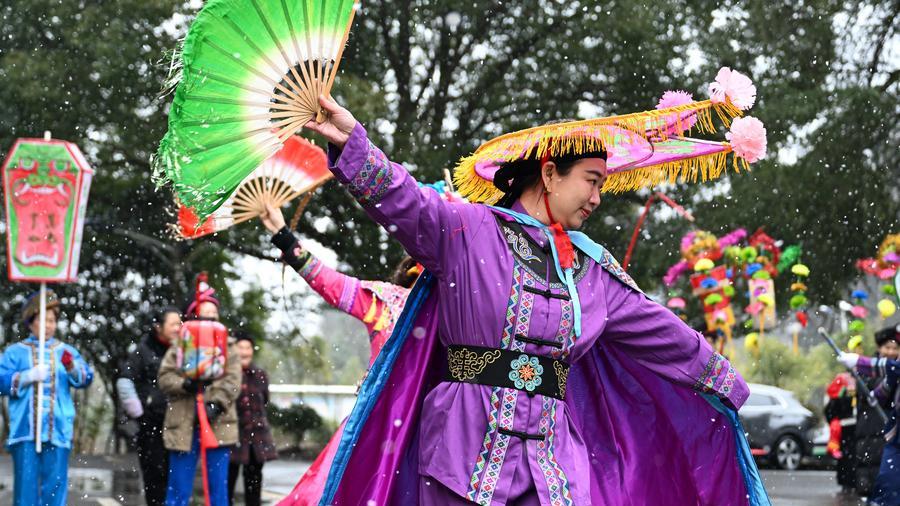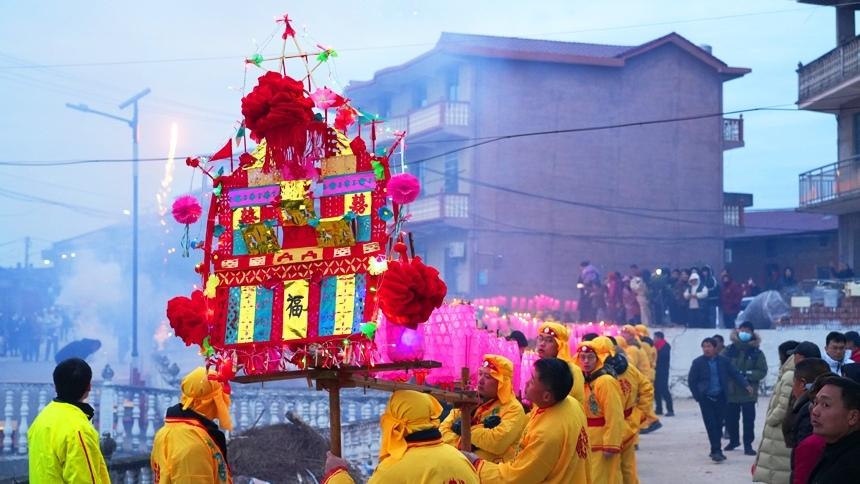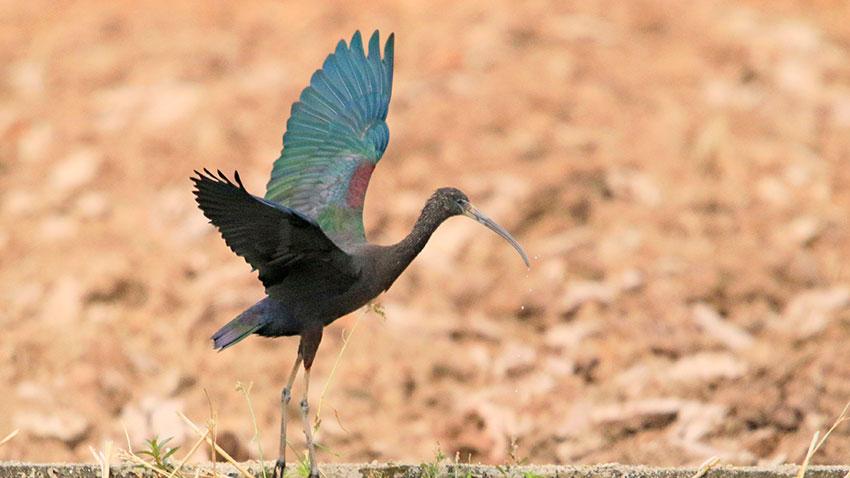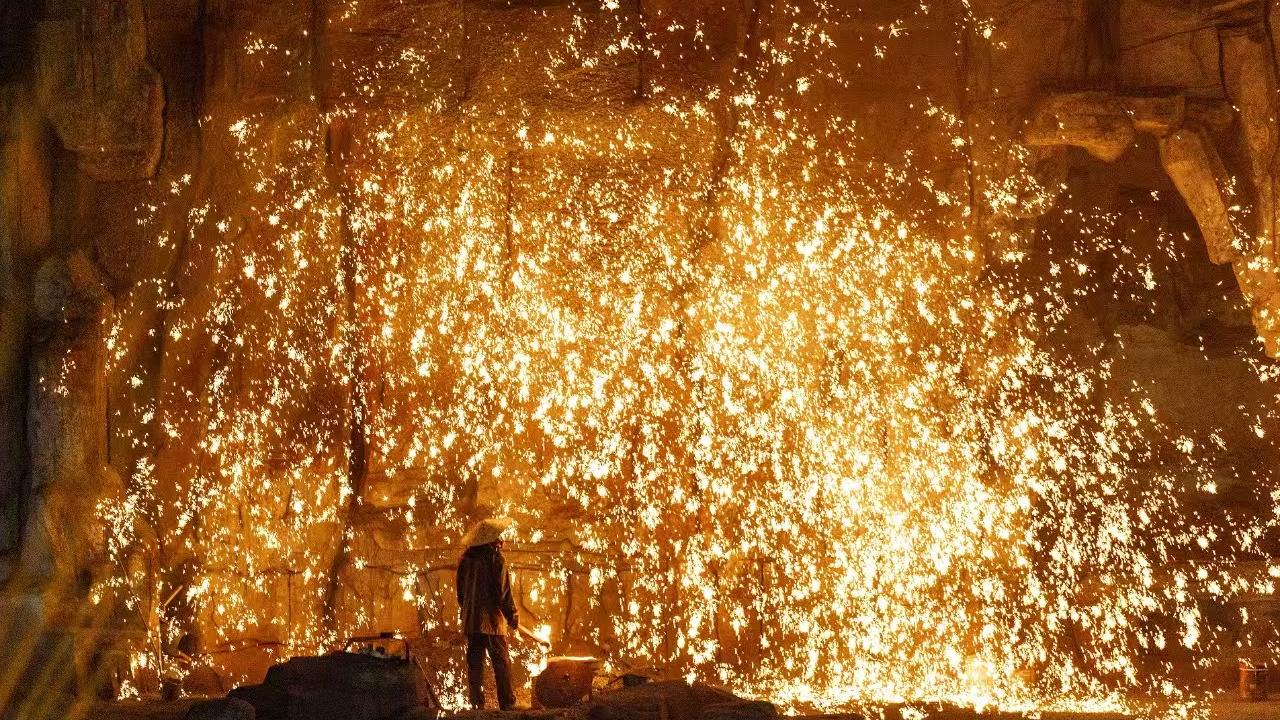My fulfilling odyssey in Wudang Mountain
I was born in 1990 and grew up in Illinois, the US. In my youth, I was captivated by martial arts, particularly the graceful battles and stunning moves depicted in Chinese kung fu movies, which sparked my longing for China, a distant country in the East. I always told myself that when I grow up, I will go to China to seek the "roots" of kung fu.
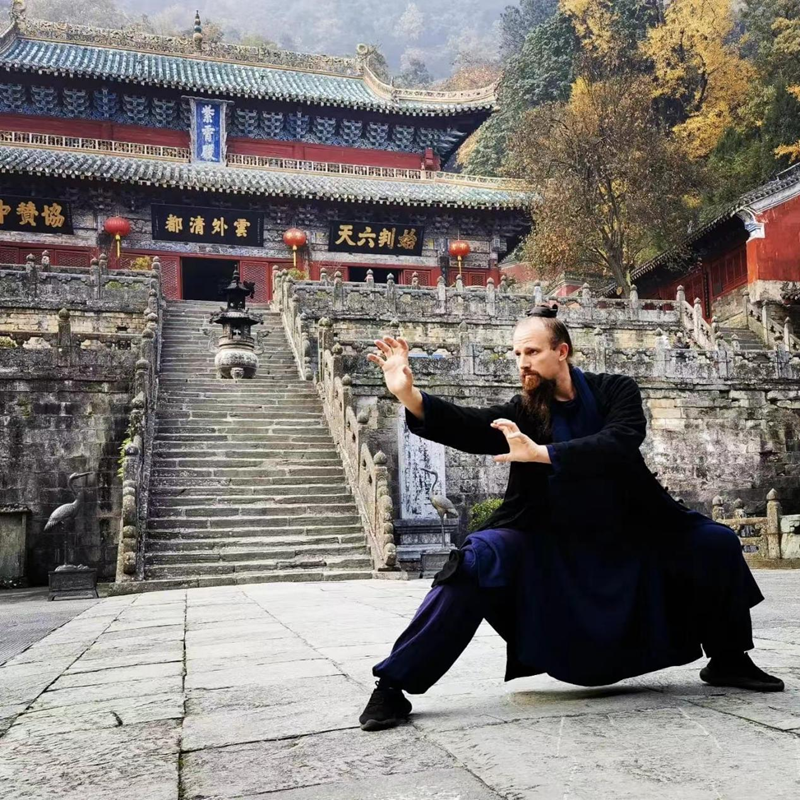
Jake Pinnick practices martial arts in front of the Zixiao Palace in central China's Wudang Mountain. (Photo provided by Jake Pinnick)
I persisted in learning Chinese during my time at university and managed to save up enough money for tuition and travel expenses by working part-time. In 2010, I finally realized my dream when I journeyed to Wudang Mountain in Shiyan, central China's Hubei Province, driven by my initial passion for Chinese martial arts and a strong physique.
Despite sufficient preparations, my journey to Wudang Mountain was fraught with difficulties due to my lack of Chinese language skills and overseas travel experience. Fortunately, I encountered many kind Chinese friends who helped me reach my destination.
June 1, 2010 was a day that I will never forget. On this day, as the first rays of dawn pierced through the thin mist and bathed the foot of Wudang Mountain, I finally arrived at the 600-year-old Yuxu Gong Temple, also known as the Jade Void Temple. There, I saw disciples dressed in black Taoist robes wielding silver swords with graceful agility and powerful majesty, exuding a sense of immortal, transcendent elegance that filled me with deep admiration.
From then on, I started to learn martial arts from my master at the esteemed Wudang Taoist Traditional Kungfu Academy, where I joined a five-year program for foreign learners to embrace new challenges. My initial years were filled with obstacles, such as lack of physical flexibility, stability and strength. Standing at 1.9 meters tall, I struggled to touch my toes with my chin while practicing leg stretches and splits. It was also hard for me to stay balanced in a horse stance.

Photo shows Jake Pinnick playing dongxiao, the Chinese vertical bamboo flute closely associated with Taoist culture. (Photo provided by Jake Pinnick)
At the beginning, my master would constantly shout, "Jake, lower your horse stance, even lower!" I would reply with a contorted expression, "Master, it's already as low as I can go." Seeing my response, my master couldn't help but laugh.
In order to keep up with the training, I engaged in resistance training with bamboo sticks every day. I even made a determined effort to understand and memorize the Tao Te Ching, which is cryptic and difficult for foreigners. Despite facing challenges every day, I endured the rigorous training and studying.
The long-term study of martial arts has been highly beneficial for me. I have not only mastered disciplines such as the Eight Immortals Cane, Tai Chi, and Qigong, but developed an appreciation for their cultural significance. I have learned about the Chinese wisdom of balancing internal and external cultivation, strength and gentleness, and the Taoist philosophy of unity between heaven and humanity and respect for nature.
After completing my studies in 2014, I returned to the US. I found that my experience in China left a lasting influence on me. Wearing Taoist robes, eating Chinese food and drinking tea became part of my daily life. I also realized that my understanding of traditional Chinese culture was far from enough. Therefore, I made my way to Wudang Mountain once again, to study traditional Chinese music, philosophy and history.
Among the traditional Chinese musical instruments, I developed a unique fondness for dongxiao, the Chinese vertical bamboo flute closely associated with Taoist culture. It produces a smooth and gentle sound that creates a tranquil and elegant ambiance, and also helps in cultivating the breathing skills of those practicing Tai Chi.
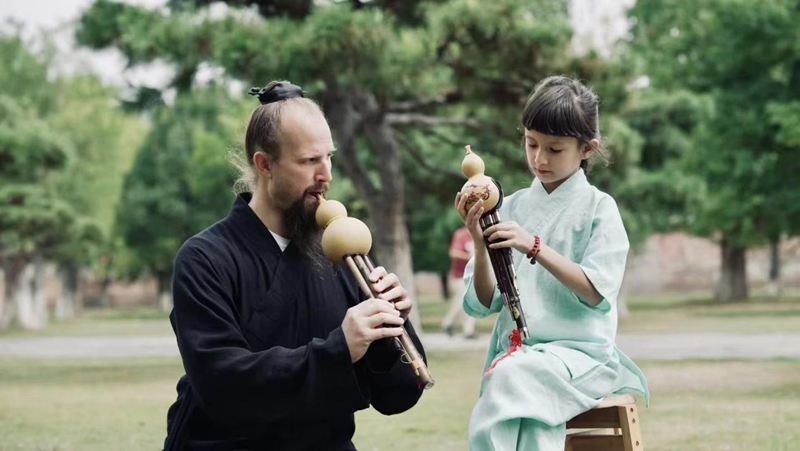
Jake Pinnick shows his daughter how to play traditional Chinese musical instruments. (Photo provided by Jake Pinnick)
When learning this instrument, I encountered many difficulties because my lack of proficiency in the Chinese language made it difficult for me to understand Chinese instructional materials. In 2022, I published an English book "Introduction to the Dong Xiao: Learn How to Play the Chinese Vertical Flute" in the US to create learning resources for Chinese culture enthusiasts worldwide. When working on this book, I delved into the extensive history of each musical piece and even produced instructional videos for the songs I collected.
Later on, I started teaching martial arts, dongxiao, tea art, Tai Chi techniques, Taoist culture, and Taoist arts online. Over the years, many of my students from around the world have come to China to experience traditional Chinese culture. Last year, two of my Belgian students came to Wudang Mountain and participated in the 7th Wudang Taichi International Fellowship Competition. One of them won a silver medal in the overseas individual category, which made me very proud.
Recently, my students and I have started recording instructional videos for martial arts and dongxiao, and we have been posting short videos about our lives and learning experiences in Wudang Mountain, which have been well-received by people around the world.
My connection with China began with my admiration for Wudang martial arts and has been enriched by the profound Chinese culture. Today, I am a 16th-generation disciple of the Wudang Sanfeng martial arts lineage, Wudang culture has become the cultural foundation of my family, and China has become my second home.
I am currently working on my second book about dongxiao and have started researching Wudang Taoist music. I hope to keep sharing my stories in Wudang Mountain with more people, building trust through communication, and contributing my efforts to cultural exchanges between the US and China, and promoting traditional Chinese culture in the world.
(Jake Pinnick is an American martial arts coach in central China's Wudang Mountain.)
Photos
Related Stories
- Chinese firms’ performance reflects resilience in the face of US tariff uncertainty
- Chinese e-commerce merchants slam US tariff uncertainty
- China blasts US official's baseless accusations
- Chinese industry chamber urges US to resolve differences via dialogues as American firms, consumers pay price for tariffs
- Beijing hits back after new tariffs
Copyright © 2025 People's Daily Online. All Rights Reserved.






